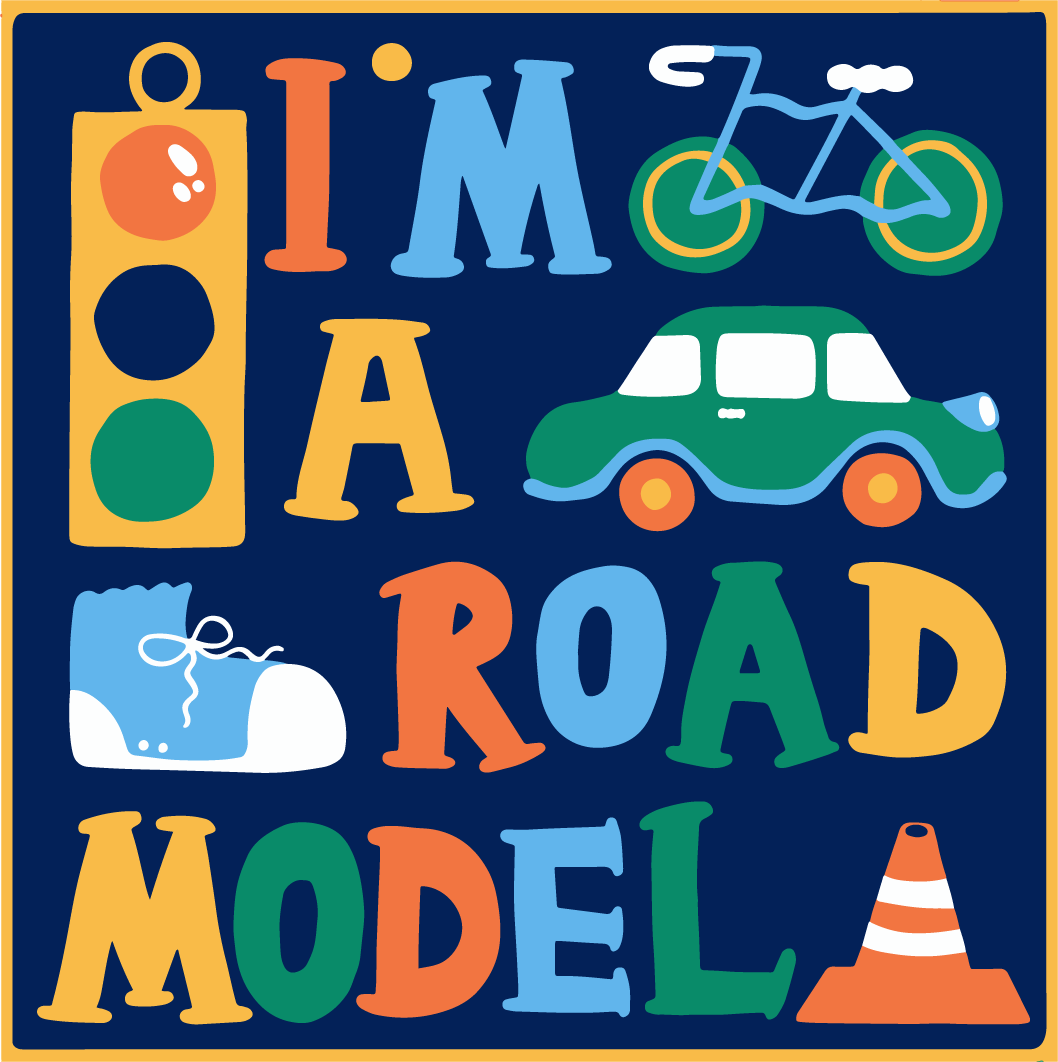
Are you a Community Road Model?
Community Road Models pledge to use active transportation more often and to take greater care on the roads. This is especially important near our vital road users – students!
One school community at a time, we want to build a network of road models across the Waterloo region to create spaces that are welcoming to students and the greater community.
By taking the pledge, you commit to:
Drivers
- Drive within posted speed limits – speeds are usually decided based on road design and road use, to allow adequate stopping time; but we also need to adjust our driving speeds to road and weather conditions. Speeding and aggressive driving are the most dangerous behaviours on the road and they lead to the most devastating injuries.
- Drive without distraction – watch the road instead of drinking a coffee, using a cellphone, or turning to others in the car. Distractions decrease your reaction time and are a major cause of avoidable collisions in Waterloo.
- Park and stop in legal zones only – most parking restrictions are in place for the volume traffic times, which is when more dangers exist. This is precisely when your “5 minute stop” causes dangerous congestion and limits sightlines for pedestrians and other drivers. It is very difficult for officers to enforce because, by the time they arrive, the 5 minute stop is complete. So we really need road models who can help by keeping clear of these spaces.
- Stop fully at marked crossings and stop signs – the rolling stop causes confusion for pedestrians who may hesitate to take their turn and feel as if it’s never their turn.
- Leave space and time to react – the #1 improper driving action in Waterloo Region collisions is “following too close.” Leaving space and time to react will help you avoid the unexpected and get where you’re going without a fender bender.
Pedestrians
- Cross at marked crossings or with a crossing guard whenever available – know how to cross at midblock crossings and pedestrian crossovers. When they are not available and you must cross without a marked crossing or midblock, make sure the coast is clear all the way to the other sidewalk and don’t run!
Cyclists
- Do not endanger pedestrians – do not ride too close to pedestrians and remember they may not hear you coming. Be especially careful around children and older adults who may move unpredictably.
- Regard traffic signals and signs as if you are a vehicle – responding to traffic commands keeps you and pedestrians much safer.
- Pass buses on the left – buses stop to let people off and on, and cyclists can be harmed or cause harm by people and their possessions as they are disembarking.
Active transportation is any self-powered transportation including walking, cycling, using a wheelchair, scootering, rollerblading, and so on. When you use your own power to travel, it reduces the number of cars on the road and creates a safer travel environment for all. Reducing traffic volumes at bell times creates safer school zones for all students and improving walking and cycling routes to school enhance the safety, connectivity, and quality of life for the community as a whole.
- Air quality – fewer cars on the street means less CO2 and improved air quality and reduces associated risks of lung and cardiovascular diseases. Increased active travel also supports Waterloo Region’s greenhouse gas reduction target of 80% below 2005 levels by 2050.
- Physical health – improved stamina, stronger muscles, and greater cardiovascular health. See why walking 30 minutes a day is the single best thing you can do for your health.
Mental health – reduced stress, depression, and anxiety; and increased happiness. More parents who walk children to school report feeling happy on the school commute and they report being less rushed than those who drive. - Independence – active school travel creates opportunities for gradually more independent mobility. Children go from being led to leading others and in the process, practice healthy habits that they are more likely to engage in for the rest of their lives.
- Better mental acuity – active transportation also supports healthy brain development and increased focus. Research proves that people who move more aren’t just healthier, they also tend to do better academically, be more mentally engaged, and miss fewer days of school/work. Studies by Active Living Research show that physically active kids have increased brain activity, and improved test scores as well as grades.
Take an extra second to notice other road users who travel differently than you, and treat them the way you would treat your loved ones. When you travel in your neighbourhood, you may know many of the drivers, cyclists, and pedestrians who share your roads. Move with care, purpose, and responsibility, and always take time to acknowledge others when you come to a yield or stop sign.